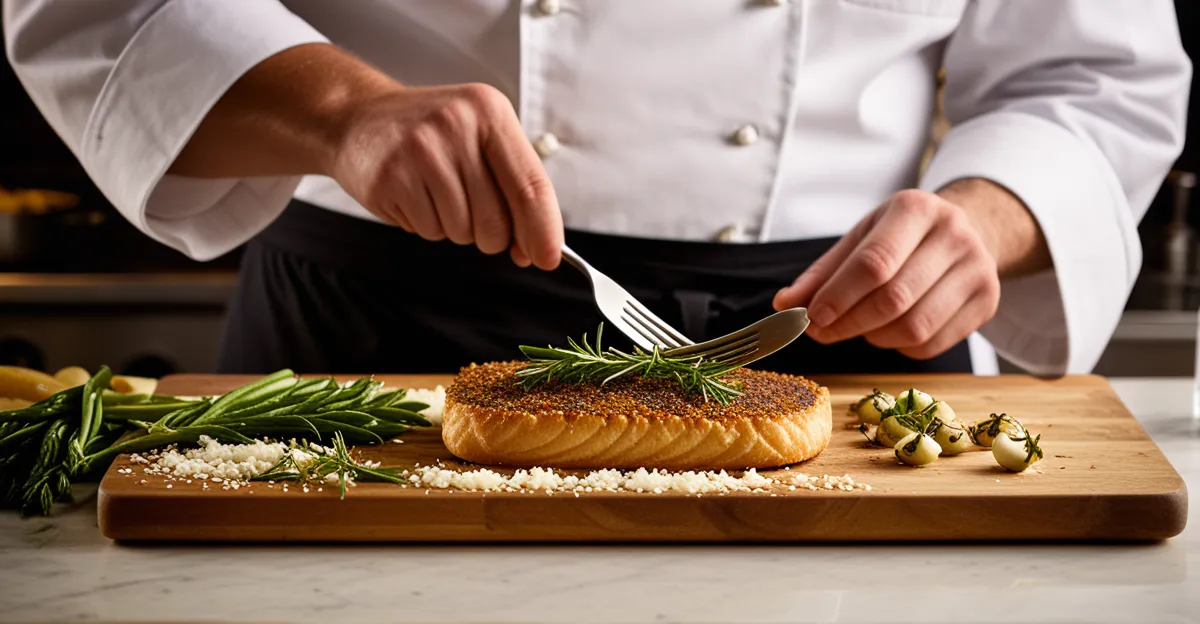Meeting Modern Expectations with Traditional British Dishes
In today’s culinary landscape, innovative British cuisine plays a pivotal role in connecting heritage with contemporary tastes. Modern British food trends push chefs to adapt traditional recipes to resonate with evolving palates, which often demand lighter textures, fresher ingredients, and inventive presentations. This shift is not merely about changing flavors but involves reimagining how classic dishes can meet current expectations without losing their cultural essence.
Adapting traditional British dishes requires a careful balance between honoring authenticity and embracing creativity. Reinterpretations of British classics must preserve the core flavors that define them, yet introduce elements reflecting today’s global dining influences and health-conscious preferences. For instance, traditional hearty stews might be lightened by selective ingredient swaps or refined cooking techniques that enhance rather than mask familiar tastes.
Have you seen this : How can you bake a moist and flavorful Victoria sponge cake?
Innovation is crucial in the evolution of British cuisine because it prevents recipes from becoming stagnant. It encourages chefs to explore new techniques and ingredients while maintaining connections to history. Through this dynamic process, the cuisine remains relevant and exciting, appealing to both long-time admirers and new audiences. By thoughtfully blending tradition with modern flair, British food can continue evolving while celebrating its roots.
Techniques to Reinvent Iconic British Foods
Reinventing traditional British dishes demands creative cooking techniques that honor familiar flavors while offering fresh experiences. Modern methods like sous-vide allow precise control over texture and doneness, ensuring classic meats and vegetables retain their richness but gain enhanced tenderness. Molecular gastronomy introduces playful elements such as unusual textures or deconstructed forms, transforming the presentation and mouthfeel without sacrificing authenticity.
In parallel : What are the key elements of a traditional Lancashire hotpot?
In the process of British dish reinvention, balancing innovation and preservation is essential. For example, a traditional beef stew can be reimagined by slow-cooking sous-vide to intensify flavors, then plating with a refined garnish for visual appeal. Additionally, foam or gel-like accompaniments derived from key ingredients retain the original taste but update the format, appealing to contemporary diners seeking novelty.
To keep the essence of classic dishes recognisable, chefs often employ subtle alterations rather than radical changes. Altering the cooking method while maintaining core ingredients or adjusting seasoning to complement modern palettes exemplifies how culinary experimentation can succeed without alienating traditionalists. Such approaches allow dishes to evolve with the times while celebrating British culinary heritage.
Integrating Contemporary and Global Ingredients
Bringing fusion British dishes to life involves thoughtfully incorporating international elements without overshadowing tradition. Ingredient innovation plays a vital role here, allowing chefs to substitute classic components with fresh, globally inspired alternatives that enhance flavor and texture. For example, using Middle Eastern spices in a traditional roast or introducing Asian vegetables to a salad can add exciting depth while maintaining the dish’s British foundation.
Prioritising seasonal and local produce ensures freshness and supports sustainability, aligning with modern diners’ values. This approach not only boosts quality but also connects contemporary British cuisine to its rich agricultural heritage. Seasonal ingredients naturally evolve menus throughout the year, enabling inventive recipes that reflect current harvests and local availability.
Successful fusion concepts often arise from balancing complementary flavor profiles between British and global cuisines. For instance, pairing hearty British stews with vibrant Indian chutneys or integrating Mediterranean herbs into classic pies showcases how British-global cuisine can be harmoniously blended. These techniques broaden the appeal of traditional dishes by introducing new, exciting tastes that resonate with diverse modern palates while respecting culinary roots.
Real-World Examples from Notable UK Chefs
Exploring UK chef innovation reveals how culinary leaders elevate traditional British dishes through modernised British recipes. For example, Nathan Outlaw transforms classic fish and chips by enhancing quality ingredients and refining techniques. His approach focuses on sourcing the freshest fish and using a lighter, crisp batter that preserves the dish’s familiar taste while increasing its sophistication. This reinvention respects the original dish but offers a contemporary dining experience, demonstrating how subtle improvements can elevate a staple.
Angela Hartnett exemplifies fusion in British cuisine with her Italian-inspired shepherd’s pie. By incorporating Mediterranean flavors and textures, she reshapes a traditional dish into something novel yet recognisable. This adaptation shows how UK chef innovation can successfully integrate global influences without compromising the heritage of British classics. Her recipe keeps the comforting essence of shepherd’s pie but introduces fresh ingredients and seasoning, appealing to diverse palates.
Tom Kerridge’s transformations of pub food highlight another facet of British culinary reinvention. His contemporary pub dishes preserve the hearty nature of favourites like pies and roasts while using creative cooking techniques to refine texture and presentation. Kerridge’s style balances traditional heartiness with modern elegance, proving that comfort food can be both authentic and innovative.
These chefs illustrate how culinary leaders drive the evolution of British cuisine by combining respect for tradition with inventive approaches. Their work encourages ongoing exploration and redefines what modern British food can achieve.
Expert Guidance and Step-by-Step Approaches
When embarking on innovative recipe development for British staples, expert chef advice proves invaluable. Experienced chefs recommend beginning with a deep understanding of the original dish’s core flavors and textures. This foundation ensures that any modifications or experiments respect the essence of the classic while opening opportunities for creativity.
A common starting point is a step-by-step guide that breaks down the dish into components—main ingredient, seasoning, cooking method, and presentation. For example, when reworking a traditional roast, chefs might first select high-quality, seasonal produce, then adjust marinades or spice blends to introduce fresh elements without overwhelming the primary taste. Cooking techniques like sous-vide can be introduced gradually to improve texture while maintaining familiarity.
During this process, chefs often encounter challenges such as balancing bold new flavors with the comfort of tradition. Creative solutions include using international spices sparingly or incorporating unexpected garnishes that complement rather than dominate. Another frequent obstacle is preserving dish integrity while enhancing healthfulness—a task solved by intelligent ingredient swaps or lighter cooking methods.
Applying creative cooking step-by-step also involves tasting and refining at each stage, ensuring the reinvented dish appeals to both heritage lovers and adventurous diners. Ultimately, expert guidance encourages iterative experimentation, where trial and error lead to satisfying innovations that honor Britain’s rich culinary heritage while meeting modern expectations.




